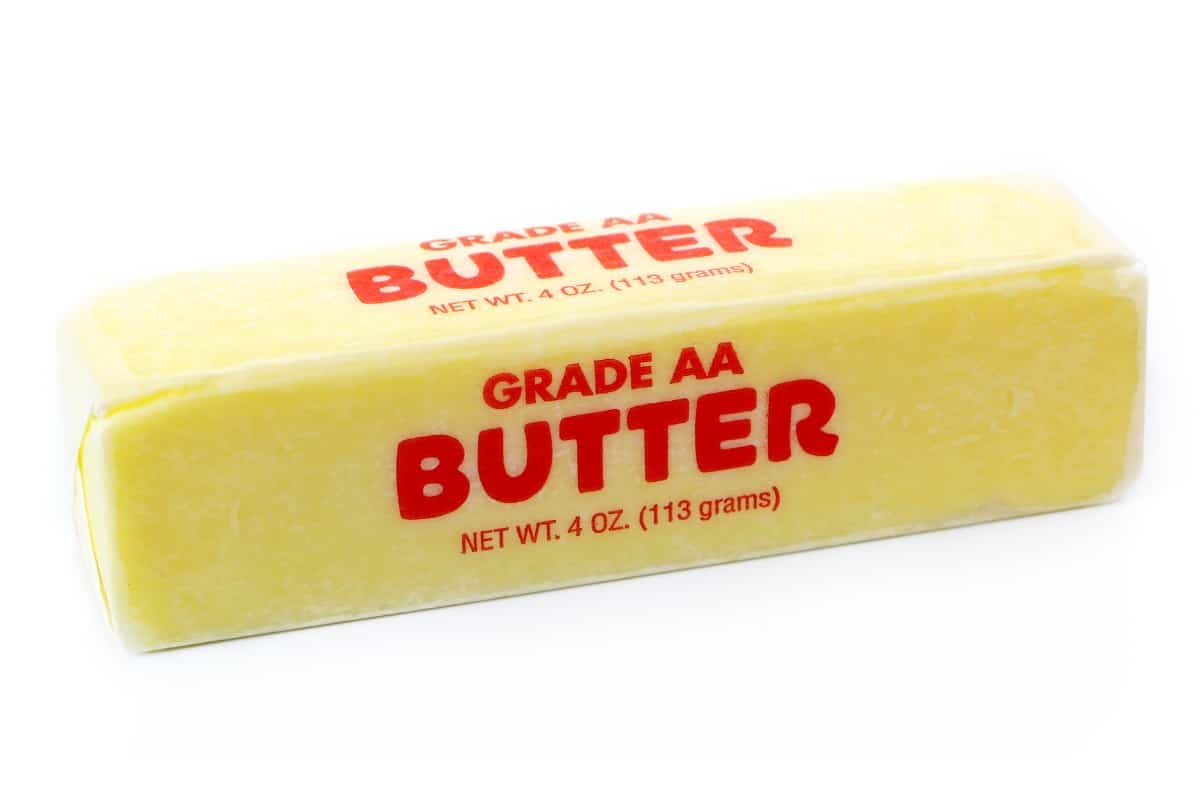Baking often involves precise measurements, and butter is a key ingredient. If you only have unsalted butter on hand but your recipe calls for salted, don’t fret! Knowing how much salt to add to unsalted butter will ensure your baked goods turn out perfectly, especially for items like compound butters, caramels, breads, frostings, muffins, cakes, or cookies. Let’s explore the ideal salt quantities and the best applications for unsalted butter.
Determining the Right Amount of Salt
What exactly is the difference between salted and unsalted butter? Simply put, it’s the salt content. This seemingly small difference impacts the flavor of your baked goods.
Salt acts as a flavor enhancer, balancing the sweet and other flavors in a dish. The combination of salty and sweet notes is what makes baked goods so irresistible.
While some recipes specifically call for salted butter, using unsalted butter is easily remedied with a simple addition of salt.
The general rule is to add ¼ teaspoon of salt for every 8 tablespoons (one stick or ½ cup) of unsalted butter.
Here’s a breakdown of common measurements:
- 1/16 teaspoon of salt for 2 tablespoons of butter
- ⅛ teaspoon of salt for 4 tablespoons of butter
- ½ teaspoon of salt for 1 cup (16 tablespoons) of butter
Image alt text: A close-up shot of a stick of unsalted butter still in its wrapper, sitting on a kitchen counter, ready to be used in baking.
Salted vs. Unsalted Butter: Which Should You Use for Baking?
When a recipe doesn’t specify, opt for unsalted butter. Professional recipe developers will always indicate if salted butter is required. The absence of a designation means you can safely use unsalted butter, giving you control over the salt levels in your recipe.
Salt Content in Salted Butter: A Vague Landscape
While the guideline is ¼ teaspoon of salt per 8 tablespoons of butter, the exact salt content in a stick of salted butter can vary slightly from brand to brand.
In most cases, you won’t notice a significant difference in flavor once the butter is incorporated into a dish. However, when using butter as a spread or in compound butters, the salt difference becomes more noticeable. Experiment with different brands to find your preferred level of saltiness.
Image alt text: A large, rectangular block of unsalted butter resting on a white plate, showcasing its creamy texture and pale yellow color.
Swapping Salted Butter for Unsalted: A Quick Adjustment
What if you only have salted butter when the recipe calls for unsalted? The solution is simple: reduce the amount of salt the recipe calls for.
For every 8 tablespoons of salted butter you use, subtract ¼ teaspoon of salt from the recipe’s total salt requirement.
For instance, if a recipe requires 8 tablespoons of unsalted butter and ½ teaspoon of salt, simply use salted butter and reduce the added salt to ¼ teaspoon.
Maximizing Salted Butter: Beyond Baking
Salted butter truly shines when it’s the star of the show, such as a topping or spread.
Consider using it on crostinis for appetizers or melting it over homemade pancakes. Salted butter is also perfect for making compound butters – simply combine it with herbs, spices, or seasonings to create flavorful additions to steak, fish, chicken, or vegetables.
When using salted butter as a primary flavor component, it’s best to choose a high-quality brand.
Alternatively, you can use salted butter in baking as a convenient way to skip adding extra salt.
Selecting the Right Salt
The type of salt you use also matters. For making salted butter, fine-grain salt is your best bet, as it dissolves evenly. Using larger salt crystals like kosher or sea salt may result in a crunchy texture. While this can be interesting, table salt is generally preferred for a smooth consistency.
In Conclusion
Knowing how to adjust the salt content of butter is a valuable skill for any baker. Whether you need to add salt to unsalted butter or reduce salt when using salted butter, these simple techniques will ensure your recipes turn out perfectly every time. By using the right type of salt and following these guidelines, you can achieve that perfectly rich and balanced flavor in all your culinary creations.
